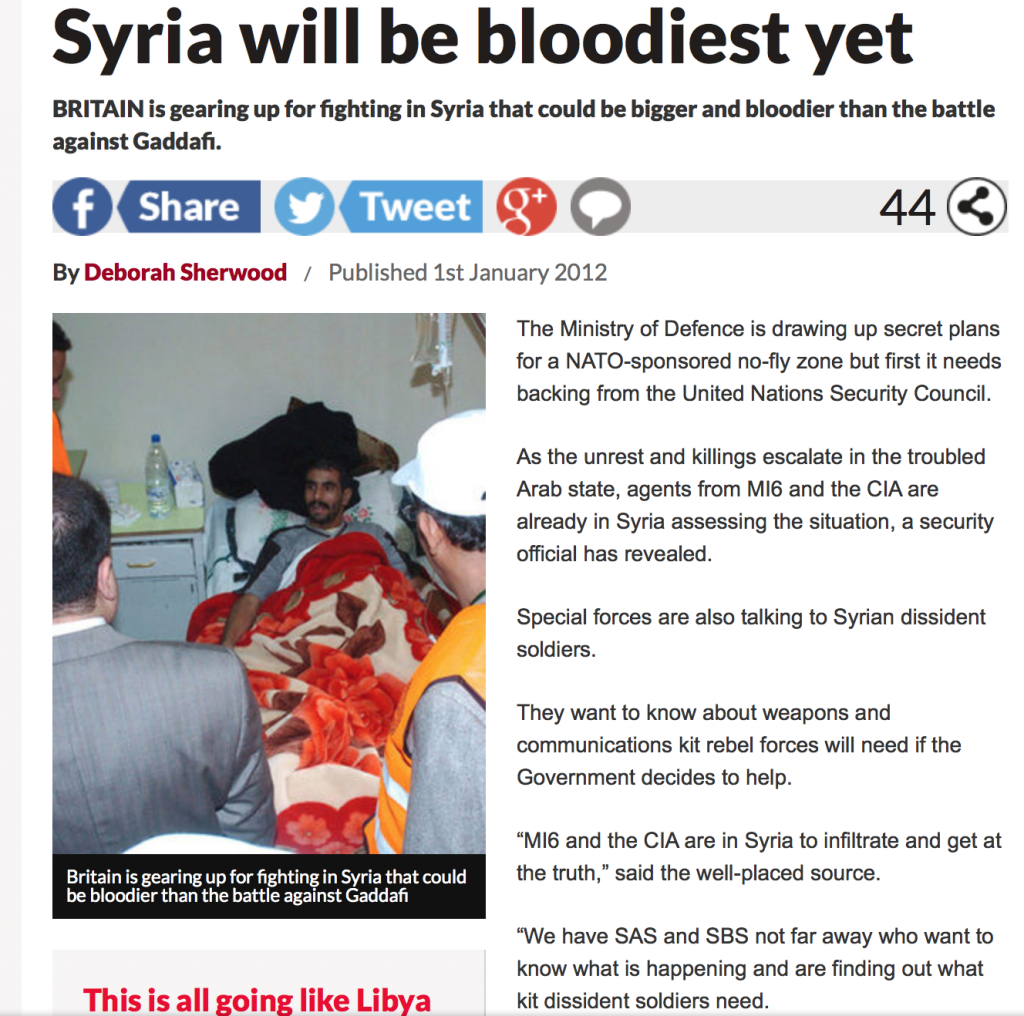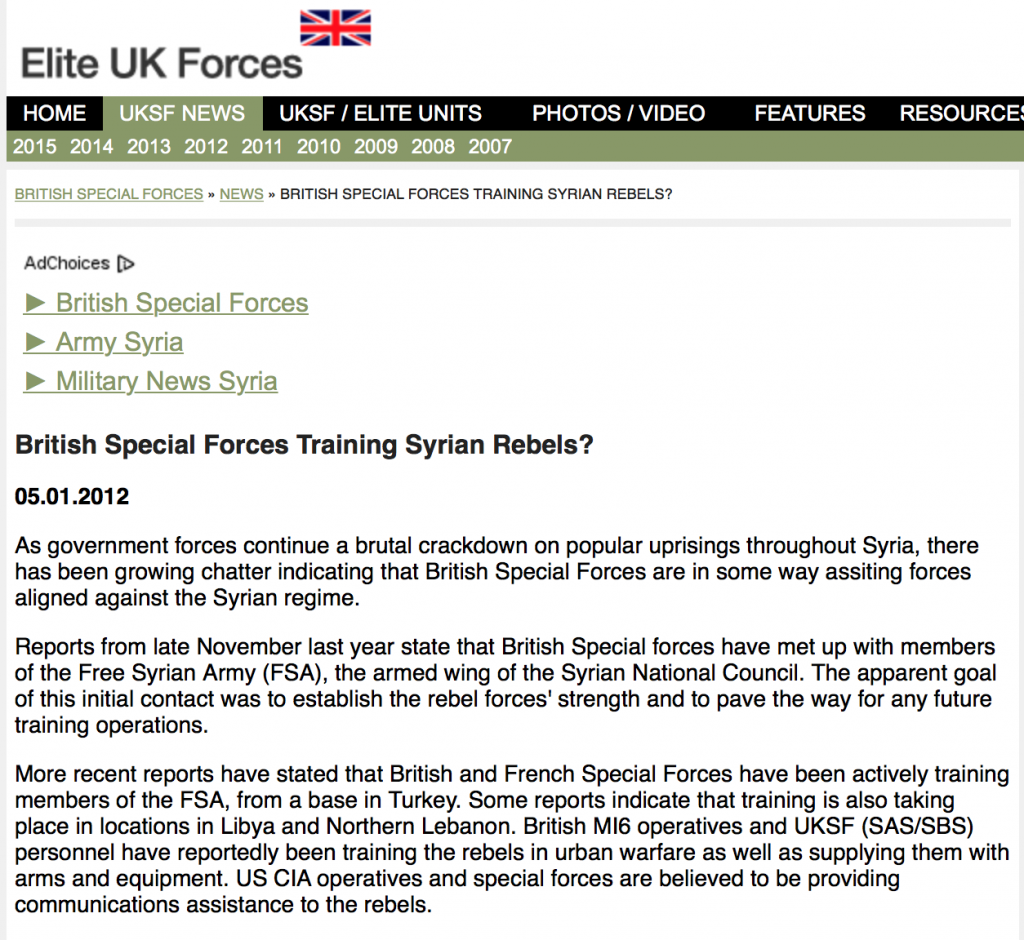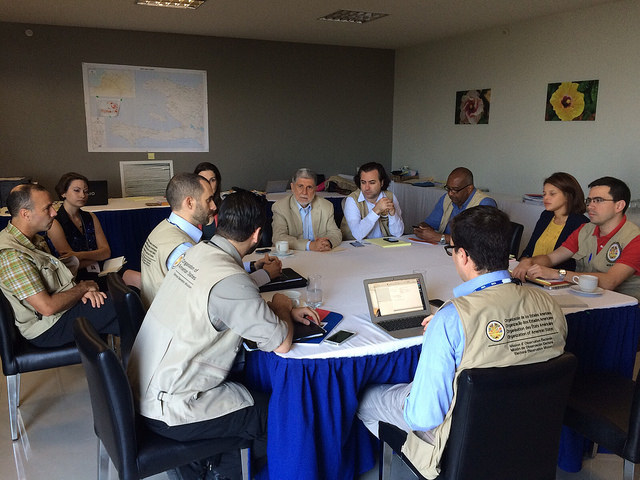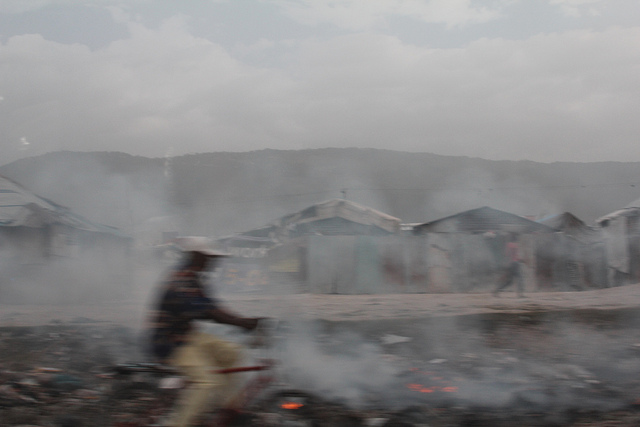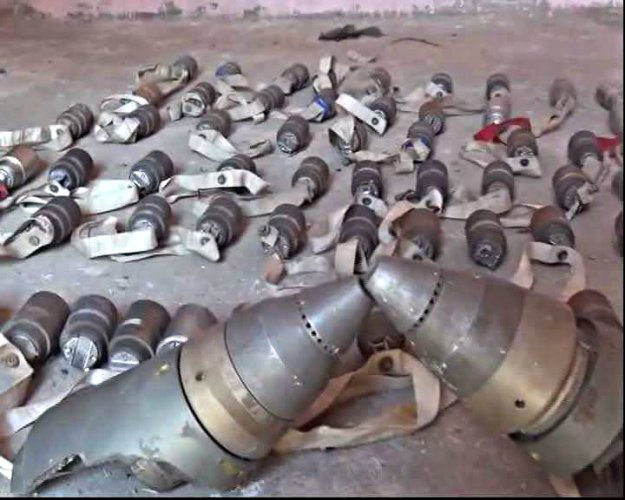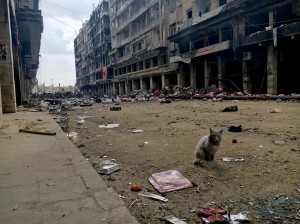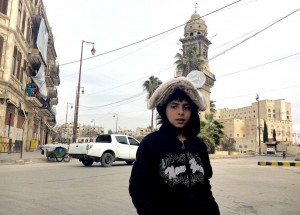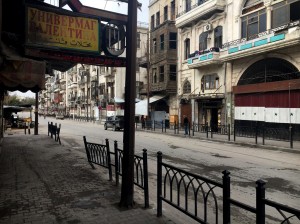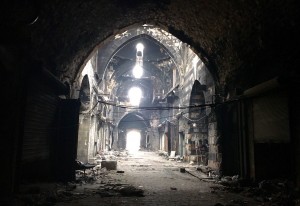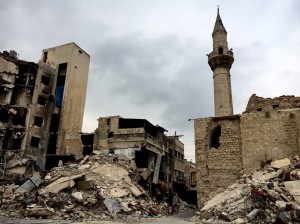El pasado sábado 30 de enero, los equipos forenses españoles encontraron los restos mortales requeridos por los familiares de un ciudadano español, Timoteo Mendieta Alcalá, fusilado en 1939 por las fuerzas franquistas aduciendo “auxilio a la rebelión” y enterrado con 22 cuerpos más (ver nota de Eldiario.es). En esa misma nota periodística leemos, por parte de la jurista Ana Messuti, abogada argentina que ayudo durante largos años a los descendientes de esta víctima del franquismo, en particular a su hija Ascensión Mendieta Ibarra, que: ” Este día es mucho más de lo que jamás pude prometer. Cuando Ascensión se presentó le dije lo único que no le puedo prometer es la exhumación. Era algo casi imposible, pero para Ascensión no hay nada imposible“. Cabe señalar que los equipos forenses españoles iniciaron los trabajos de exhumación el pasado 19 de enero del 2016 (ver nota de El País). A una semana de iniciada la exhumación, los expertos confirmaron que la fosa común excavada era bien la de Timoteo Mendieta Alcalá (ver nota de ABC del 26 de enero del 2016). Imágenes de esta exhumación reunidas en este enlace permiten apreciar con mayor precisión los alcances de los trabajos realizados. Con estos hallazgos del último fin de semana del mes de enero del 2016, Timoteo Mendieta Alcalá se convierte en la primera víctima del franquismo en ser exhumada a solicitud de la justicia de Argentina ¿Cómo puede explicarse que la exhumación de una persona fusilada en 1939 en España (y cuyos restos mortales yacen con otros en una fosa ubicada en territorio español) deba ser tramitada ante un juzgado en Buenos Aires? Es lo que se intentará brevemente aclarar en las líneas que siguen.
Un Estado español ausente
El extenso movimiento de solidaridad expresado en estas últimas semanas desde diversas partes de España y desde varias latitudes a los familiares de Timoteo Mendieta Alcalá encuentra su origen en el hecho siguiente: esta exhumación, a diferencias de muchas otras realizadas en España, es la primera que haya sido ordenada por la justicia. No la de España, sino la de Argentina. En efecto, debido a los obstáculos encontrados ante las autoridades estatales españolas y ante el mismo aparato judicial español (Nota 1), los familiares optaron en este caso por recurrir a la justicia de Argentina. La nieta de Doña Ascensión, Aitana Vargas escribió en este artículo reproducido en este enlace que: “Ni en su más remota imaginación habría podido soñar mi abuela con un recibimiento en tierras extranjeras como el que protagonizó. Arropada y escuchada por el Congreso de los Diputados de Buenos Aires, el Senado, y por las Madres de la Plaza de Mayo, logró luego sobreponerse a una terca fiebre y a la vejez incómoda para declarar en el Juzgado de la magistrada Servini, que amablemente prestó sus oídos a la causa de mi abuela”.
Como es sabido, pese a incesantes reclamos de víctimas, familiares de víctimas, colectivos de abogados y ONG españolas, la falta de investigaciones y la impunidad campean en la materia en España (Nota 2). En un reciente estudio sobre las fosas colectivas españolas, desde la perspectiva historiográfica, se lee que se trata de: “tumbas colectivas que contienen los restos de aquellos que murieron víctimas de la represión. Un tipo de inhumación que representa una prueba irrefutable de la barbarie y que fue utilizado, por el bando franquista, como un instrumento pedagógico que extendió el miedo a la población. Una forma de castigo que principalmente perseguía el olvido, borrar a los vencidos de la faz de la tierra y ocultarlos para siempre del recuerdo” (Nota 3).
En noviembre del 2015, ante el hermetismo de las entidades públicas en España para investigar lo ocurrido, una asociación canaria de víctimas (denominada ACVF) presentó una denuncia con 1800 nombres, la cual se incorporará al expediente tramitado ante el Juzgado Nacional en lo Criminal y Correccional Federal número 1 de Buenos Aires, Argentina (ver nota de prensa).
Con relación a las víctimas del régimen franquista, en mayo del 2013, el Ejecutivo español solicitó suspender una videoconferencia acordada por la justicia argentina desde Buenos Aires con varias de ellas en España, aduciendo que para realizar este tipo de diligencias, su concurso era necesario: según las autoridades españolas, se debía aplicar “el tratado bilateral de extradición y asistencia judicial en materia penal de 3 de marzo de 1987, requiriendo, de acuerdo con lo previsto en los artículos 30 y 41, la solicitud debidamente cursada mediante comisión rogatoria dirigida al Ministerio de Asuntos Exteriores, como Autoridad Central, tal y como ha sido el caso respecto a diligencias similares practicadas con anterioridad” (ver nota de El País). No se tiene seguridad que las “diligencias similares practicadas con anterioridad” refirieran a recabar los testimonios de víctimas del franquismo ante un juez argentino.
En donde en cambio hay una gran certeza es con relación a la ausencia del Estado español en las exhumaciones de fosas comunes: la primera exhumación de una víctima de la guerra civil en España fue realizada directamente por familiares, sin intervención judicial alguna (ni de ninguna autoridad estatal) en octubre del año 2000. Los restos encontrados de Emilio Silva Faba, fusilado en 1936, fueron confirmados por análisis de ADN de laboratorios en el 2003 (ver nota de El País del 2003). En aquel momento, el nieto de esta víctima del franquismo, Emilio Silva Barrera, quién fundó posteriormente la Asociación por la Recuperación de la Memoria Histórica (ARMH), señaló: “Sólo se cierra un ciclo personal, se abre el colectivo“.
Memoria histórica y gobiernos recientes
Desde su creación, la ARMH (ver sitio ) ha establecido una importante red en el territorio español para recabar información así como para proporcionar ayuda a los familiares de víctimas de la guerra civil y del franquismo. Se lee en su sitio que: “A raíz de fuerte repercusión mediática que tuvo la exhumación en Priaranza del Bierzo (León), cientos de cartas, llamadas y correos electrónicos llegaron a los responsables de los trabajos. En ese punto y dado el volumen de casos de asesinatos extrajudiciales y desapariciones llegados desde todo el país y siempre con el mismo patrón: secuestro-asesinato-desaparición. Se decide crear por primera vez en España una Asociación civil que canalice todos esos casos y que intente dar respuesta a unas preguntas que el estado español nunca ha dado”.
Esta primera exhumación en el año 2000 de una víctima fusilada en 1936 durante la guerra civil española se dio durante el segundo período del Gobierno de José María Aznar en España: a diferencia del primer período (1996-2000), para el segundo período (2000-2004), Aznar contó con una mayoría de escaños obtenidos en las elecciones de marzo del 2000. Difícilmente el Estado español acompañaría con algún tipo de reforma legislativa o con algún cambio de actitud por parte de sus autoridades, el clamor de las víctimas del franquismo.
Notemos que la recuperación de los restos mortales de ciudadanos españoles fallecidos no fue del todo ausente en la gestión de las autoridades españolas de la época: una antropóloga forense costarricense indica no obstante (en un artículo sobre su experiencia trabajando en las fosas comunes en España) que el interés de Aznar se centró en solamente algunos de ellos, al escribir que ”… no es ningún secreto que el Presidente Aznar y su Gobierno hizo posible la disposición de millones de pesetas disponibles para financiar la repatriación de los restos de aquellos que pertenecieron a la División Azul que pelearon en colaboración con los Nazis en la Segunda Guerra Mundial, y que al mismo tiempo se resistió enérgicamente para proveer fondos para las exhumaciones de las fosas Republicanas. Esta situación abocó a la insuficiencia de equipo e infraestructura para obtener resultados óptimos. Estas circunstancias, unidas al miedo y a la estigmatización existente en muchos de los Republicanos causa que el trabajo forense se dificulte para todos los involucrados” (Nota 4).
En el 2002, la precitada ARMH exigió al jefe del Ejecutivo español una declaración política de condena al franquismo y de ayuda para los familiares de las víctimas (ver nota de prensa de noviembre del 2002), sin mayor éxito. Años después, se oiría de este personaje de la política española que: “Tenemos que recuperar un espíritu de concordia y unidad perdido en gran medida (…) nacido en la transición española. Que eso no se hace removiendo tumbas ni removiendo huesos ni tirándose a la cabeza, se hace trabajando todos los días seriamente, pensando en el futuro del país” (ver nota de prensa sobre declaraciones recientes particularmente duras de alcaldes en España sobre las víctimas del franquismo, y video en Youtube que recoge las cuestionables declaraciones del susodicho personaje).
De manera que un lector poco familiarizado con exhumaciones de víctimas del franquismo pueda tener una descripción más completa de su alcance y de su significado, lo remitimos al informe detallado de una exhumación de ocho cuerpos realizada en la localidad de Olmedillo de Roa (Burgos) en el 2003, la cual concluye (ver informe ) que: “4. Todos las muertes puede calificarse de carácter violento homicida a juzgar por las heridas por arma de fuego localizadas en los cráneos. 5. Las evidencias recuperadas y el análisis de conjunto permiten una interpretación de los hechos que concuerda fielmente con las versiones previamente recogidas a través de testimonios”.
Familiares y abogados persistentes
Ante el hermetismo de las entidades públicas españolas, la perseverancia y la insistencia de los descendientes de Timoteo Mendieta Alcalá llevaron a sus abogados a interponer una demanda en Argentina en el 2010. La jueza argentina María Servini de Cubría obtuvo de las autoridades judiciales de España, en aplicación del principio de jurisdicción universal, que sea exhumada esta fosa común ubicada en Guadalajara, ubicada a unos 50 kilómetros de Madrid.
La solicitud hecha en el 2014 por la jueza desde Argentina precisaba (ver nota ) que: “Líbrese exhorto diplomático al Titular del Juzgado Territorial, que por razones de turno corresponda, con jurisdicción en Guadalajara (…) a fin de solicitarle arbitre los medios necesarios para que en presencia de quien suscribe se proceda a la exhumación del cuerpo sin vida que se encontraría inhumado en la fosa n° 2, ubicada en el patio n° 4 del cementerio de Guadalajara, ocupando el penúltimo lugar, comenzando de arriba hacia abajo, o segundo lugar de abajo hacia arriba, de diecisiete cuerpos que se hallarían apilados en forma vertical“. Se indica en este sitio sobre la memoria histórica en Guadalajara que el ayuntamiento español respondió al juez español a cargo de tramitar la solicitud argentina que: “El informe, fechado el 27 de junio de 2014 y remitido al Juzgado de Instrucción Número 1 de Guadalajara, explica que la fosa en la que fue enterrado Timoteo es una fosa común cuyo primer enterramiento data del 16 de noviembre de 1939 y el último el 9 de septiembre del mismo año. En la fosa se enterraron, según consta en el informe, 22 o 23 personas ejecutadas por el Juzgado Especial de Ejecuciones, según los distintos registros“. El documento elaborado por el ayuntamiento de Guadalajara y sus diversos anexos están disponibles en esta nota .
Pese a la información muy detallada proveída por el ayuntamiento, la primera respuesta de la justicia española a la petición proveniente de Argentina fue negativa: en su escrito de enero del 2015, se alegó por parte de la jueza española incertidumbre sobre la localización exacta del cuerpo para ordenar una exhumación. Según se lee en esta nota de prensa, para la jueza española María Lourdes Platero “de la inspección ocular realizada y de las manifestaciones efectuadas no queda acreditado fehacientemente que en la fosa nº2 del patio 4 del Cementerio de Guadalajara se encuentre el cuerpo sin vida de D. Timoteo Mendieta”.
Una segunda solicitud enviada desde Argentina en marzo del 2015 logró finalmente que se procediera a la exhumación, iniciada en esta tercera semana del mes de enero del 2016. Resulta oportuno precisar que el inicio de esta exhumación ha contado con una inédita presencia de autoridades españolas esta vez: “En el cementerio de Guadalajara se hicieron presentes hoy un juez y un fiscal, algo poco habitual” se lee esta nota periodística de Telam (Argentina).
El pasado de España enterrado en fosas comunes
En su artículo precitado, la antropóloga forense costarricense (quién ha participado en exhumaciones en distintas partes del mundo, además de España), Roxana Ferllini Timms, concluye de su experiencia en tierras españolas que: “España constituye una excepción dentro del proceso de transición de justicia, ya que el paso a la democratización no buscó conciliar la violencia y abusos de los derechos humanos que ocurrieron durante la Guerra Civil y el régimen Franquista. La transición creó en 1977 el pacto del olvido, el cual fundamentalmente dio cabida al silencio, neutralizando toda temática concerniente a ese pasado, incluyendo la exclusión de dichos temas en cursos de historia española” (Nota 5). Otra antropóloga costarricense, Ariana Fernández Muñoz, con una vasta experiencia internacional, también ha participado en la exhumación de fosas españolas (ver nota publicada en La Nación).
En España, se estima a unos 150.000 los desaparecidos durante la guerra civil española. En la precitada nota de El País del año 2003, “Priaranza se convirtió en el primer pueblo de España donde, tras la recuperación de la democracia, se abría la tierra para sacar a los muertos republicanos de las cunetas y llevarlos a los cementerios”.
Según el mapa oficial de fosas comunes elaborado después de la adopción de la ley sobre la memoria histórica en el 2007, existen más de 2000 fosas comunes en el territorio español (ver mapa). En el año 2011, se adoptó un “Protocolo de actuación en exhumaciones de víctimas de la guerra civil y la dictadura” (ver texto publicado en el Boletín Oficial del Estado del 27 de septiembre del 2011). A enero del 2012, se lee que las exhumaciones de 278 fosas comunes en busca de víctimas de la guerra civil española entre el 2000 y el 2011 se habían realizado directamente por parte de familiares y organizaciones de la sociedad civil, sin intervención judicial de ningún tipo (Nota 6). A diferencia de lo que ocurre en otras latitudes, existe un registro bastante preciso en los archivos de las autoridades españolas sobre el lugar exacto en los que están enterrados muchas de las víctimas del franquismo. En esta nota periodística relacionada con la fosa común de Guadalajara, se lee que “De entrada, los arqueólogos no entienden por qué una fosa tan grande. «Estamos trabajando a 2,80 metros de profundidad, sobre el cuerpo número 13. Si se cumple lo que señala el registro, hay 22 cuerpos, por lo que pasaremos de los 4 metros», cuenta René Pacheco, director de la exhumación. «Una fosa de estas dimensiones solo se explica desde la premeditación total de lo que iba a ocurrir en este lugar». En la misma zona hay otros 350 ejecutados. Y en el mismo camposanto una fosa común que alberga los restos de otros 800. Pero lo que cuesta entender es por qué el régimen dejó registrados los asesinatos. Hay cuatro libros en el archivo municipal que recogen pormenorizadamente los datos de todos los fusilados. «Estaba dentro de su legalidad, por eso está documentada toda la represión», aclara Pacheco. A lo que añade un dato clarificador: «los sepultureros cobraban por cada cuerpo que enterraban, por eso lo dejaban anotado», añade”.
Algunas consecuencias de principios adoptados en el plano internacional
Cabe recordar que la ley del 2007 sobre memoria histórica se aprobó en España a pocos años de la resolución 60/147 sobre “Principios y directrices básicos sobre el derecho de las víctimas de violaciones manifiestas de las normas internacionales de derechos humanos y de violaciones graves del derecho internacional humanitario a interponer recursos y obtener reparaciones” (adoptada en diciembre del 2005 por la Asamblea General de Naciones Unidas, ver texto ). En el 2006, se adoptó además un instrumento vinculante: la Convención Internacional para la protección de todas las personas contra las desapariciones forzadas (aprobada por la Asamblea General en su resolución 61/177, de 20 de diciembre de 2006). Este instrumento internacional (que cuenta en la actualidad con un centenar de firmas y solo unas 50 ratificaciones) fue suscrito por España en septiembre del 2007 y ratificado en septiembre del 2009 (ver estado oficial de firmas y ratificaciones).
De la misma manera, el Protocolo antes mencionado sobre exhumaciones en España se dio a pocos años de la adopción de la resolución 12/12 aprobada en el 2009 por el Consejo de Derechos Humanos de Naciones Unidas sobre el derecho a la verdad (ver texto ): esta resolución encuentra su origen en una resolución adoptada por la Comisión de Derechos Humanos (Resolución 2005/66 “El derecho a la verdad”) adoptada en abril de 2005 en Ginebra, a iniciativa de Argentina.
Notemos que estos esfuerzos del Estado español fueron precedidos por iniciativas en algunas comunidades autónomas: por ejemplo, Cataluña adoptó en junio del 2009 la Ley 10/2009 “sobre la localización e identificación de las personas desaparecidas durante la Guerra Civil y la dictadura franquista, y la dignificación de las fosas comunes” (ver texto ). En septiembre del 2009, fue la Junta de Andalucía la que adoptó la “Orden de 7 de septiembre de 2009, por la que se aprueba el Protocolo Andaluz de actuación en exhumaciones de víctimas de la Guerra Civil y la Posguerra” (ver texto ). En septiembre del 2011, pocos días antes de que España adoptara un Protocolo, el País Vasco adoptó un “Protocolo de Actuación en materia de Exhumaciones en el País Vasco” (ver nota de prensa y texto del Protocolo en el Anexo I (pp. 22-28) de este documento oficial del Gobierno Vasco titulado “Plan Vasco 2015-20 de investigación y localización de fosas para la búsqueda e identificación de personas desaparecidas durante la Guerra Civil”).
La situación de las víctimas y sus familiares ante la justicia en España
Si bien existen algunos tímidos avances en materia legislativa en España (como la ley del 2007 y el protocolo del 2011), y regulaciones adoptadas por varias comunidades autónomas, las autoridades españolas y la misma justicia en España se han mostrado extremadamente reservadas con relación a investigar y a sancionar a los crímenes perpetrados durante la guerra civil española. Las interpretaciones restrictivas sobre el alcance de las cláusulas de los instrumentos internacionales aplicables a la materia han impedido que una simple solicitud de acceder a restos mortales por parte de familiares reciba algún tipo de respuesta. Expertos internacionales han puesto de manifiesto que la interpretación que se ha hecho en España de algunas leyes nacionales es sumamente cuestionable al impedir investigaciones: remitimos en particular a la entrevista al jurista Ariel Dulitsky (ver entrevista) en la que, a propósito de la ley española de amnistía adoptada en 1977, precisa que: “Otra interpretación posible sería la siguiente: para determinar si este hecho que yo tengo denunciado está cubierto o no por la Ley de Amnistía, primero debo investigarlo para saber quiénes fueron las víctimas y quiénes fueron los responsables y una vez hecha toda esta investigación es posible determinar si los hechos están cubiertos o no por la Ley de Amnistía. Pero, jamás debería impedirse la investigación desde un principio”.
En esta nota de prensa se puede leer la percepción que tiene de la justicia española la hija de Timoteo Mendieta Alcalá, Ascensión Mendieta Ibarra, y que posiblemente comparten muchos familiares de víctimas españolas: “En España no ha habido justicia para las víctimas ni solidaridad, lo ha impedido la tan cacareada ley de amnistía, que en realidad a quien amnistió fue a los personajes que participaron en las atrocidades que se cometieron contra los ciudadanos de este país” /…/, y añade que las víctimas de la dictadura no tienen “un estatuto jurídico como sí otras víctimas, por ejemplo las del terrorismo, que me alegro mucho por ellas, pero hemos viajado muy solitos“.
En una de sus visitas a España en mayo del año 2014, la jueza argentina que investiga varios casos de víctimas del franquismo, y que ha optado por venir a oír personalmente sus testimonios en territorio español (ver nota ) indicó: “Lo que se ve es el miedo y el terror de cada persona a declarar. A veces quieren omitir nombres o no dan detalles de las circunstancias en las que ocurrieron los hechos. Se emocionan, lloran. Lloran incluso los nietos que no han conocido a sus abuelos. Es duro, es difícil”.
En una entrevista del 2013, el juez que se puede considerar como el más conocido fuera de las fronteras españolas, Baltasar Garzón Real, declaró: “Me da mucha pena que tenga que ser en Argentina donde se investiguen estos crímenes porque España en su día paralizó el proceso, cuando me suspendió y con el auto posterior del Tribunal Supremo que cerraba todas las vías para las víctimas“.
El examen reciente ante Naciones Unidas
Ante el Comité sobre Desapariciones Forzadas de las Naciones Unidas (establecido mediante la precitada Convención Internacional para la protección de todas las personas contra las desapariciones forzadas), una coalición de ONG españolas detalló en años recientes (ver nota ) el panorama actual en España: “Los datos son elocuentes: más de 150.000 desaparecidos, más de 30.000 niños robados, al día de hoy, y más de 2.232 fosas documentadas de las que sólo 390 han sido abiertas. Un dato que convierte a España en el segundo país en el mundo en número de fosas comunes. Y todo ello sin ningún procedimiento judicial abierto en demanda de verdad, justicia y reparación, y no por falta de voluntad de afectados, sean familiares o ciudadanos interesados en ello”.
En sus observaciones al informe oficial presentado por España al Comité de Naciones Unidas sobre Desapariciones Forzadas en diciembre del 2012, la fundación Baltasar Garzón hizo ver el error interpretativo de las autoridades españolas, al indicar que: “A este respecto, debe ponerse de manifiesto que España incurre en un grave error de interpretación cuando afirma que la fecha a partir de la cual debe informar al Comité, es la de entrada en vigor de la norma, es decir, el 23 de diciembre de 2010. El Estado español realiza una interpretación en detrimento de las decenas de miles de víctimas de desapariciones forzadas cometidas durante la guerra civil y el franquismo, en nuestro país. La interpretación que aporta, quebranta clamorosamente el principio internacional consolidado de no impunidad de este crimen, máxime cuando ha sido cometido en forma sistemática y contra sectores de la población civil y como parte de la política del Estado (crímenes contra la humanidad)” (ver informe de la Fundación Baltasar Garzón, p. 2).
En sus observaciones al informe presentado por España (ver informe CED/C/ESP/CO/1, dado a conocer en diciembre del 2013), el Comité sobre Desapariciones Forzadas de Naciones Unidas le señaló a España que: “12. El Comité, teniendo en consideración el régimen de prescripción vigente en España en relación con los delitos de carácter permanente, insta al Estado parte a que vele por que los plazos de prescripción se cuenten efectivamente a partir del momento en que cesa la desaparición forzada, es decir, desde que la persona aparece con vida, se encuentran sus restos o se restituye su identidad. Asimismo, lo exhorta a que asegure que todas las desapariciones forzadas sean investigadas de manera exhaustiva e imparcial, independientemente del tiempo transcurrido desde el inicio de las mismas y aun cuando no se haya presentado ninguna denuncia formal; que se adopten las medidas necesarias, legislativas o judiciales, con miras a superar los obstáculos jurídicos de orden interno que puedan impedir tales investigaciones, en particular la interpretación que se ha dado a la ley de amnistía”.
En noviembre del 2013, los integrantes de otro mecanismo de Naciones Unidas, el Grupo de Trabajo sobre las Desapariciones Forzadas o Involuntarias, luego de realizar una misión a España (ver informe ) concluyeron, entre otros, que: “Adicionalmente, no se ha tenido en cuenta que el carácter de delito de lesa humanidad de las desapariciones cometidas durante la Guerra Civil y la dictadura. Esta interpretación es contraria a las obligaciones internacionales de España y se recomienda su modificación. El Grupo de Trabajo insta al Estado español a juzgar las desapariciones forzadas a la luz de estas obligaciones internacionales y a establecer legislativamente la imprescriptibilidad de las desapariciones forzadas o la determinación de que la prescripción solo puede comenzar a computarse a partir del cese de la desaparición forzada”.
En otro informe sobre España del año 2014, (ver documento A/HRC/27/3/Add.1, disponible aquí ), el Relator Especial de Naciones Unidas sobre la promoción de la verdad, la justicia, la reparación y las garantías de no repetición, consideró en sus conclusiones (punto 102) que: “El Relator Especial nota que varios representantes del Gobierno en las reuniones que mantuvieron enmarcaron las discusiones en el siguiente esquema: “o todos concluimos que ya estamos totalmente reconciliados o la única alternativa es el resurgir de odios subyacentes, lo cual implicaría un riesgo demasiado alto”. En opinión del Relator Especial, esta posición no le hace justicia a los avances logrados durante el proceso de democratización en España. Recalca que, considerando la fortaleza de las instituciones y la ausencia de riesgos para la estabilidad del orden democrático, resulta especialmente sorprendente observar que no se haya hecho más en favor de los derechos de tantas víctimas”. En el párrafo 99 de su informe, se precisa por parte del experto de Naciones Unidas que: “El Relator Especial alienta al Estado a retomar cuanto antes este análisis y reitera su disposición para acompañar este proceso en el marco de su mandato. Recalca que estudios comparados de otras experiencias de países que han enfrentado retos similares, incluyendo en el contexto europeo, como Alemania, pueden resultar sumamente provechosos”.
En marzo del 2015, a raíz de una decisión de España de no extraditar a 17 ciudadanos españoles acusados por la justicia argentina de ser responsables de violaciones de los derechos humanos cometidas durante el régimen franquista, un grupo de expertos de Naciones Unidas denunció nuevamente a España. Externaron, en una carta pública, que las autoridades españolas tienen la obligación de extraditar a estas personas, mientras no se tomen medidas en España para garantizar el acceso a la justicia y el derecho a la verdad de las víctimas ante las instancias legales españolas. En este comunicado de prensa de Naciones Unidas, se precisa, por parte de los expertos internacionales que: “La denegación de la extradición deja en profundo desamparo a las víctimas y a sus familiares, negando su derecho a la justicia y a la verdad”.
Un breve balance
Como se puede apreciar, son muchos y muy variados los señalamientos hechos al Estado español por parte de organismos de la sociedad civil y asociaciones de familiares de víctimas en España; en el 2008, a raíz de una maniobra de la justicia para inhibirse de conocer la causa de las víctimas del franquismo planteadas ante los juzgados españoles (Nota 7), Amnistía Internacional circuló un comunicado denominado “Para pasar página, primero hay que leerla“, reuniendo la firmas de diversos especialistas y juristas españoles así como de América Latina. En el texto se puede leer que “España tiene el deber de poner fin a la prolongada injusticia de la que han sido objeto las víctimas de desaparición forzada y otros crímenes y sus familiares, llevando a cabo las investigaciones necesarias para dar con el paradero de los restos de estas personas, y esclarecer las circunstancias en que tan graves abusos se produjeron”. Los firmantes expresaron también que: “Los que suscriben el presente manifiesto ya observaron, con motivo de la aprobación de la Ley 52/2007, por la que se reconocen y amplían derechos y se establecen medidas a favor de quienes padecieron persecución o violencia durante la guerra civil y la dictadura, que en ella no quedaban plasmados los estándares internacionales fijados en materia de desapariciones, exhumaciones y recuperación de cuerpos”. Finalmente, nos parece oportuno precisar que, en esta misiva colectiva, los firmantes expresaron sin ninguna contemplación para el Estado y de forma vehemente, la peculiaridad de la situación en España, al señalar (con relación a las exhumaciones y a la recuperación de restos mortales) que: “No existe antecedente alguno en que un Estado haya trasladado a las familias de las víctimas las tareas, costos y responsabilidades de dichas acciones”.
Como lo hemos brevemente reseñado, en los últimos años, los señalamientos sobre los incumplimientos por parte de España han también provenido de expertos y de entidades de Naciones Unidas internacionales encargadas de velar por el debido cumplimiento de las obligaciones contraídas por el Estado español.
A diferencia de los procesos realizados en América Latina sobre graves violaciones de los derechos humanos ocurridas en el pasado, que han dado lugar a una variada experiencia en el plano nacional y a una extensa jurisprudencia elaborada por la Corte Interamericana de Derechos Humanos (desde sus primeros fallos contra Honduras en los años 80) (Nota 8), el Estado español se ha mostrado extremadamente reacio a replicar algunas de estas experiencias. Para las víctimas y sus familiares, el sistema judicial español no tiene cómo implementar y desarrollar figuras jurídicas tales como el derecho a la verdad, la obligación de investigar y de sancionar a responsables de cometer graves violaciones ocurridas en el pasado, o garantizar a los familiares de las víctimas el denominado derecho al duelo o derecho al luto (Nota 9).
En este artículo de Página12 (Argentina) sobre el caso de Timoteo Mendieta Alcalá, las lágrimas que brotaron en los ojos de Ascensión Mendieta Ibarra, al momento de ser informada del tan anhelado “sí” de la justicia española para poder finalmente proceder a la exhumación de los restos de su padre, ilustran el dolor lancinante de muchos familiares en España: “– ¿Por qué llorás? –preguntó la abogada argentina. –Lloro porque pienso en él; toda la vida bajo tierra –respondió. En opinión de la letrada, esa expresión revela el sufrimiento del familiar de un desaparecido, al que no ha visto morir ni sabe dónde está. “Para el familiar, el desaparecido no está muerto hasta que ve sus restos”.
Ante esta permanente y apremiante incertidumbre con la que convive diariamente un familiar en estos casos, y ante la ausencia de respuestas a las solicitudes de exhumar las fosas comunes españolas, el tiempo ha transcurrido sin que la justicia española logre superar las resistencias que se mantienen desde su interior. Desde el 2010, (ver, entre muchas otras, esta nota de El País) se advirtió que los “tiempos” del único juez español interesado en investigar los crímenes del franquismo estaban siendo “manejados” por el Tribunal Supremo. Ello culminó efectivamente con la separación del juez Baltasar Garzón Real de la judicatura española el 10 de febrero del 2012 (ver sobre el particular esta otra nota de El País). Menos sutil, el rechazo (sin mayor sustento) a la primera solicitud de la jueza argentina del 2014 evidencia el profundo temor del aparato judicial español. No obstante, algunas acciones esporádicas intentan romper el cerco impuesto por la justicia española: en marzo del 2015, se leyó en El País (ver nota) que en la localidad de Soria, “… con un auto del pasado 17 de marzo, la titular del juzgado de instrucción 1 de Almazán acaba de iniciar, 78 años después, una investigación por aquellos asesinatos”. En esta misma nota de prensa se lee el drama vivido por un niño que vio algo en 1936 (y que posiblemente lo haya perseguido durante toda su existencia como adulto): “Casi una vida después, en julio de 2013, Matías Bonilla, que tenía 9 años aquel 14 de agosto de 1936, señaló a antropólogos forenses el lugar donde habían sido enterrados”.
Más allá del plano estrictamente jurídico, la sociedad española sigue manteniendo una histórica deuda consigo misma y con todas las víctimas del franquismo que exigen que se haga justicia. Sobre las razones dadas para aplazar una y otra vez el debate en España sobre este delicado tema, una reciente publicación del Centro de Derechos Humanos de la Universidad de Deusto, explica sobre este punto preciso que: «[d]urante la guerra civil y la dictadura, no era el momento para que los familiares de desaparecidos reclamaran saber dónde estaban ni tampoco justicia, pues su seguridad e integridad estaba en peligro. Durante el proceso de transición de la dictadura a la democracia, tampoco fue el momento de tratar y solucionar el problema de los desaparecidos. Han pasado casi treinta años desde la transición, y ya es hora de que estos familiares, como víctimas también de violaciones de derechos humanos, tengan “su” momento» (Nota 10).
Esta misma publicación finaliza con una frase poco esperanzadora para las víctimas españolas y para sus familiares: “A fecha de hoy ya han pasado más de esos treinta años, y en lo que respecta a la inmensa mayoría de los tribunales de justicia en España, todo indica que «su momento» ni ha llegado aún, ni probablemente llegará”. Era sin contar con la perseverancia de los descendientes de Timoteo Mendieta Alcalá.
Conclusión
La exhumación del cuerpo de Timoteo Mendieta Alcalá permite a sus familiares, en particular a su hija Ascensión, una incansable mujer de 90 años, acceder a sus restos mortales: desde sus 13 años, edad que tenía cuando su padre fue fusilado, anhelo toda su vida el momento vivido este sábado 30 de enero del 2016. Se lee en esta nota de prensa del pasado 21 de enero que: “A mi padre lo enterraron de los primeros, debe estar al final de todo… Ahora lo voy a tener conmigo. Me voy tranquila, feliz”. Por parte de uno de los nietos de esta víctima fusilada en 1939, Francisco Vargas Mendieta, podemos percibir la misma sensación: “Estamos muy felices y contentos. Ahora misma es como si estuviéramos de luto por la muerte de un familiar y nuestro deseo ahora es poder enterrar a mi abuelo donde queramos no donde eligieron sus verdugos.” (ver nota ).
La tenacidad de Doña Ascensión viene ahora a interpelar ante los ojos de España y del mundo el sistema judicial español y a poner a prueba a sus autoridades: en particular de cara a las obligaciones internacionales contraídas por España en varios instrumentos internacionales y a las interpretaciones hechas por el juez internacional de varias de sus cláusulas.
La exhumación del cuerpo de Timoteo Mendieta Alcalá bien podría convertirse en un emblemático precedente para muchas otras víctimas de la guerra civil española y para sus familiares. También podría contribuir a relanzar el debate en el seno de la sociedad española sobre la pesada deuda que mantiene con su pasado.
Nicolás Boeglin
Foto extraída de artículo de prensa titulado: “La nieta de Ascensión cuenta la lucha de su abuela: “Tal vez su luto sea de esos que conviven en los confines de la eternidad”
Notas
Nota 1: Remitimos al lector al artículo siguiente: LÓPEZ LÓPEZ P., “Los crímenes del franquismo y el derecho internacional”, Vol. 20, Revista Derecho y Realidad (2013), pp. 279-318. Artículo disponible aquí .
Nota 2: Véase la obra siguiente sobre el particular: CABRERA MARTÍN M., La impunidad de los crímenes cometidos durante el franquismo. Obligaciones del Estado español bajo el derecho internacional, Asociación Española para el Derecho Internacional de los Derechos Humanos (AEDIDH), 2014. Texto integral de esta obra disponible aquí .
Nota 3: Véase GIMÉNEZ PORCEL J., “Las fosas comunes de la guerra civil: análisis historiográfico”, Universidad de Barcelona (UB). Facultad de Geografía e Historia, 2013, p. 30. Texto del artículo disponible aquí.
Nota 4: Véase FERLLINI TIMMS R., “Experiencias en antropología forense: perspectivas de una voluntaria extranjera”, Número 18, Boletín Galego de Medicina Legal e Forense (Enero 2012), pp. 69-78, p. 71. Artículo disponible aquí .
Nota 5: Véase FERLLINI TIMMS R., op. cit., p. 76. ( texto del artículo disponible aquí ). Sobre su experiencia como perito internacional, remitimos a esta entrevista realizada en la Revista Cultural Mito a esta profesional de Costa Rica. Con relación a las dificultades encontradas para desarrollar la antropología forense en Costa Rica, remitimos a esta entrevista a Roxana Ferllini Timms publicada por La Nación (Costa Rica) en 2013.
Nota 6: En un artículo publicado en España en el año 2012 se lee que:”… es bien sabido que las exhumaciones de la Guerra Civil en España no están siendo realizadas bajo la tutela judicial a excepción de algunos casos puntuales que han sido investigados desde los respectivos juzgados de instrucción…”: véase ETXEBERRIA GABILONDO F., “Exhumaciones contemporáneas en España: las fosas comunes de la guerra civil”, Número 18, Boletín Galego de Medicina Legal e Forense (enero 2012), pp. 13-28, p. 19. Artículo disponible aquí . Los gráficos incluidos (pp.14-15) por el autor permiten tener una idea del número de cuerpos encontrados y la repartición geográfica de los trabajos de exhumación en España realizados entre el 2000 y el 2011.
Nota 7: Sobre este episodio de la justicia española, leemos que. “El fiscal jefe de la Audiencia Nacional se opuso a la apertura de la causa por entender que se trataba de delitos comunes ya prescritos. El pleno de la Sala de lo Penal del tribunal decidió, en una reunión convocada con una insólita urgencia, paralizar las exhumaciones ordenadas por Garzón, quien poco después, en noviembre de 2008, se inhibía a favor de 62 juzgados territoriales donde estaban las fosas” (ver nota de El Pais del 2009 titulada “El tiempo se acaba para las víctimas de Franco”).
Nota 8: Con relación a los Estados del hemisferio americano pesan estas y muchas más obligaciones, tal y como lo señaló la Comisión Interamericana de Derechos Humanos en un informe del 2014 titulado “Derecho a la verdad en América” (sus conclusiones en páginas 115-117 precisan los desafíos existentes en la región en cuanto a su debida implementación). En un reciente artículo en el que se analiza el caso de las negociaciones de paz en Colombia, se concluye por parte del autor que: “El caso colombiano es ilustrativo de la posición prudente que asume la Corte Interamericana frente a contextos de justicia transicional. Sin embargo, es en el marco de ese caso particular donde serán desarrollados los futuros debates sobre la compatibilidad de las medidas y mecanismos implementados para la terminación negociada de un conflicto armado interno con las obligaciones estatales emanadas del derecho internacional”: véase GUTIÉRREZ RAMÍREZ L.M., “La obligación internacional de investigar, juzgar y sancionar graves violaciones a los derechos humanos en contextos de justicia transicional”, Vol. 16, Estudios Socio-Jurídicos (2014), pp.23-60, en pp.53-54. Artículo disponible aquí.
Nota 9: En un caso contra Bolivia (caso de detención, tortura y desaparición forzada de José Carlos Trujillo Oroza), la Corte Interamericana de Derechos Humanos indicó en el 2002 en su sentencia sobre reparaciones que: “115. En este sentido la Corte considera que la entrega de los restos mortales en casos de detenidos-desaparecidos es un acto de justicia y reparación en sí mismo. Es un acto de justicia saber el paradero del desaparecido, y es una forma de reparación porque permite dignificar a las víctimas, ya que los restos mortales de una persona merecen ser tratados con respeto para con sus deudos y con el fin de que éstos puedan darle una adecuada sepultura” (ver texto de la sentencia del 27 de febrero del 2002, Caso Trujillo Oroza Vs. Bolivia).
Nota 10: Véase CHINCHÓN ÁLVAREZ J., El tratamiento judicial de los crímenes de la Guerra Civil y el franquismo en España. Una visión de conjunto desde el Derecho internacional, Universidad de Deusto, Bilbao, Número 67, Cuadernos Deusto de Derechos Humanos (2012), p. 142. Texto integral disponible aquí.
Nicolás Boeglin : Profesor de Derecho Internacional Público, Facultad de Derecho, Universidad de Costa Rica (UCR)



